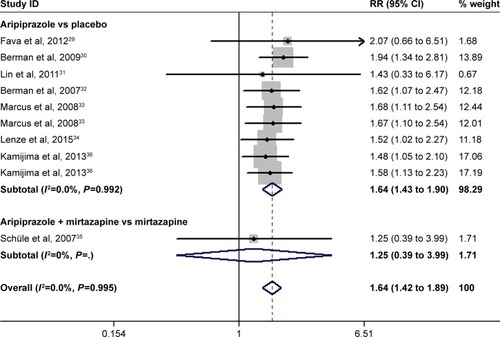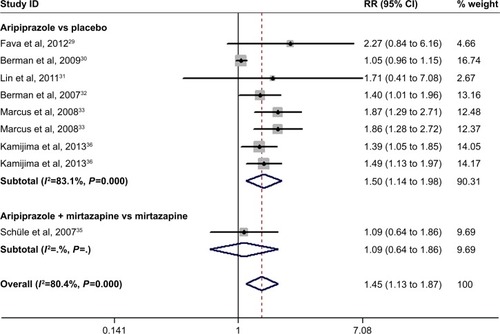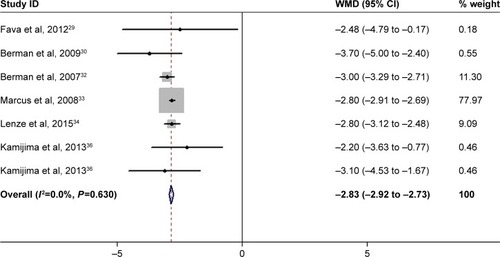Figures & data
Table 1 Baseline characteristics of patients in the trials included in the meta-analysis
Table 2 GRADE evidence profile
Figure 3 Forest plot showing the effect of adjunctive aripiprazole on remission rate.

Figure 4 Forest plot showing the effect of adjunctive aripiprazole on response rate.
Abbreviations: CI, confidence interval; RR, risk ratio.

Figure 5 Forest plot showing the effect of adjunctive aripiprazole on change from baseline in MADRS score.

Figure 6 Forest plot showing the effect of adjunctive aripiprazole on changes from baseline in CGI-I and CGI-S scores.
Abbreviations: CGI-I, Clinical Global Impression-improvement; CGI-S, Clinical Global Impression-severity; CI, confidence interval; WMD, weight mean difference.

Table 3 Summary of the RRs with 95% CIs of adverse events


